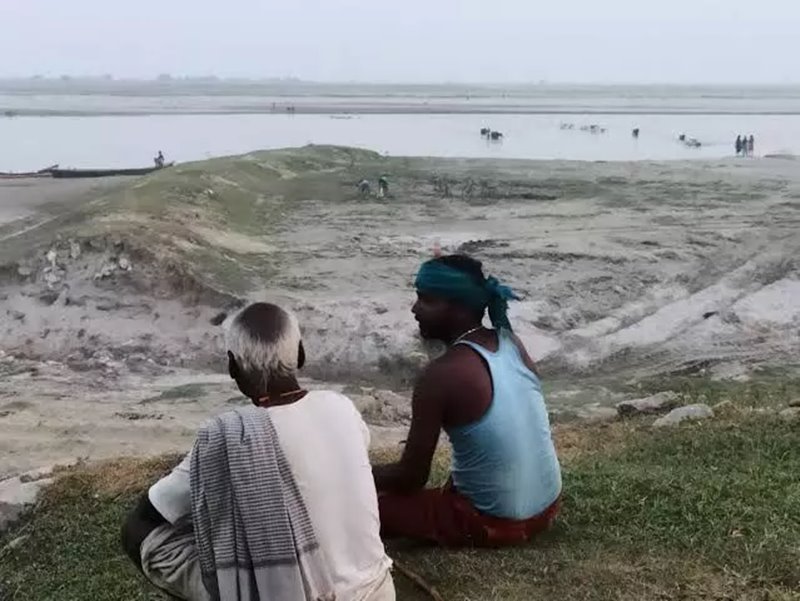The proposed Dagmara Multipurpose Hydro Power Project on the Kosi river in Bihar creates a buzz
With the Central government giving the go ahead to the 130 megawatt Dagmara Multipurpose Hydropower Project on Kosi river in north Bihar, there are expectations that it will not just generate electricity but also employment opportunities. On the other hand, ecologists are raising concerns about its impact on the region.


The project will come up about 60 kilometres downstream of the river, and a little above the Kosi bridge.
Supaul, Bihar
Supaul district in Bihar, located on the Indo-Nepal border usually makes headlines because of the Kosi river that emerges in Tibet, flows through Nepal and floods the district every year, leaving destruction in its wake which is why it is also referred to as the ‘sorrow of Bihar’.
But, this time Supaul and Kosi are in the news because the Central government has just given a go ahead for the 130 megawatt Dagmara Multipurpose Hydropower Project. It will be a run-of-river hydro project which means it will use the natural downward flow of the Kosi river to generate power. The project will generate clean and green power and is the first of its kind in the state.
The project will come up about 60 kilometres downstream of the river, and a little above the Kosi bridge. The plant will be set up at Bhaptiyahi village on the left bank of the Kosi river. The catchment area of the project is 61,972 square metres.
Hydel project to benefit 7 Bihar districts
Earlier this year, on April 18, Chief Minister Nitish Kumar’s cabinet gave its nod to the project, and on June 14, 2021, a memorandum of understanding (MoU) was signed between the Central government’s National Hydroelectric Power Corporation (NHPC) and Bihar State Hydroelectric Power Corporation Limited. The multipurpose hydropower project is being set up at an estimated cost of Rs 240 billion.
According to the Bihar state government, once the project is commissioned, other than Supaul the districts of Darbhanga, Madhubani, Samastipur, Saharsa, Madhepura and Arriya will also benefit from it.
The MoU has created a buzz especially in areas falling close to the Kosi. People there see huge employment opportunities arising out of the project.
Dagmara is a ray of hope
“The project is a ray of hope,” is how Dagmara village inhabitant Brij Bihari Singh described it to Gaon Connection.
“Unemployment is at its peak now due to the pandemic, and the hydel project is bringing hope,” echoed 62-year-old Narayan Rajak who runs a seed and fertiliser shop at Dagmara.
After the Hanuman Nagar Barrage was constructed (between 1959 and 1963), Kanwar Sain, the then chairman of the Central Water Board and Power Commission, in 1965, had recommended a second barrage be constructed to prevent erosion in the lower reaches of the Kosi. It has taken 56 years for the recommendation to be implemented.

Along with electricity, the Dagmara project will also give fillip to the production of solar energy, and fisheries. The reservoir will enable both fishing and irrigation. There are also plans in the pipeline to create a bird sanctuary in the area that will attract tourists.
Environmentalists sound a note of caution
While there is optimism and hope over the various schemes planned around the Dagmara project, there are also concerns about it. Environmentalists are sounding a note of caution as they raise questions about displacement of the population as well as ecological damage to the area, when the project commences.
Also Read: Landslide on NHPC’s Teesta V hydropower project in Sikkim damages the 55-metre high dam
Mahendra Yadav, the founder of Kosi Navnirman Manch, a people’s movement that works with Kosi embankment victims, raised several questions.
He pointed out that in all the euphoria over the benefits the Dagmara project would bring about, there was no mention of the points raised by the expert appraisal committee (EAC) set up by the Ministry of Environment, Forest and Climate Change, in 2012.
7,500 hectares of land will go under water
According to the EAC report, 7500 hectares of land would be submerged, said Yadav. “This means several villages and thousands of families will be displaced. What happens to them,” Yadav asked Gaon Connection.

He questioned how a run-of-the-river that usually worked in mountainous terrains, would benefit the plains of the Kosi river that carried so much silt in it. The EAC committee had raised the same concerns, he said.
“This area falls in an earthquake zone. Besides, there are many other ecological issues that need to be addressed. They cannot be wished away or ignored,” Yadav said. It was also to answer the questions and concerns of the people living around the Kosi river, he added.
Also Read: Solar and wind energy projects in India need an impact assessment framework
Yadav said it was important not to forget 2008 when the Kosi river breached its embankment near the Indo Nepal border and affected nearly 2.3 million people in northern parts of Bihar.
“That is why it is all important to keep the people in the know of things and answer the questions the EAC had raised, about the project,” Yadav insisted.
Will the Dagmara project protect the people from floods? According to data from Bihar’s Department of Water Resources, every year nearly 68,800 square kilometres of land goes underwater due to the floods in the Kosi river.
“There is no connection between the Dagmara project and prevention of floods,” Dinesh Kumar Mishra, an authority on the river network of North Bihar and convenor of Barh Mukti Abhiyan (an informal network of citizens concerned about the floods in the Indo-Gangetic plains), told Gaon Connection. He added, “If any politician assures the people that this dam will protect them from floods, I only have this to ask them: has there been any instance where a dam built on any river has prevented floods?”
Mishra however agreed that if the project generated employment opportunities to the people and generated enough electricity for the several districts as it promised to, it was beneficial for the people.
“This project will create a reservoir that is going to be eight kms long and fifteen kms wide, which will strengthen the dam,” Ram Kumar Rai, district president of the Bharatiya Janata Party, Supaul, told Gaon Connection.
“The Kosi region is defined by the river. And the people living here have a relationship with it. The Dagmara project will definitely benefit the people,” Chandrasekhar, a social worker in Supaul, told Gaon Connection.
Read the story in Hindi

